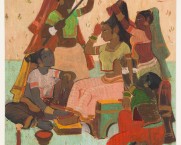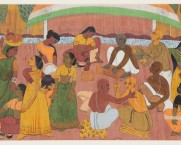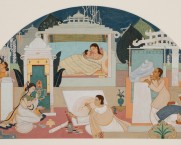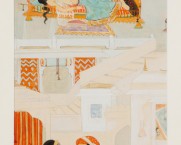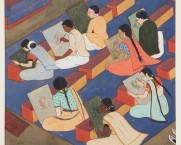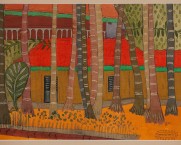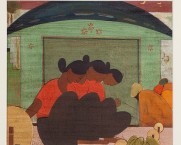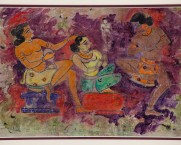C&L Shows
The Lost Movement
The private collection of Kekoo & Khorshed Gandhy
2011

Overview
The term ‘Indian Renaissance’ refers to the art movement current during the first half of the twentienth century which consciously drew from Classical Indian art practices. This revivalism was associated with work, which in subject matter, was often interested in a nationalist agenda. The style proved to be very popular both in India and abroad where exhibitions were variously held in Paris, Berlin, London and New York.
It was the work of Abanindranath Tagore who really set in motion the movement and indeed, the Paris show of this work was entitled ‘Tanjore School of Painting’. Whilst in Bengal the technique employed was heavily influenced by the wash technique associated with the works of Japanese artists. In western India, the trend tended towards a more robust referent of Rajput paintings. One of the important proponents of this style was the painter Jaganath Ahivasi, originally from Mathura, who became the head of the Indian Art Section of the J.J. School of Art, Mumbai between the late 1930s and mid 1950s.
The present exhibition at Chatterjee & Lal is a single owner collection of work predominantly executed by successive generations of students of the J.J. School of Art who studied under the tutelage of Ahivasi.
There is much for the modern viewer to delight in these works including the sensuous treatment of the human figure, the idyllic pastoral scenes and lively palette. At the same time there is a strong feeling of contemporaneity in many of the paintings through the depiction of subjects sympathetic to the nationalist fervor apparent at the moment in the nation’s history.


